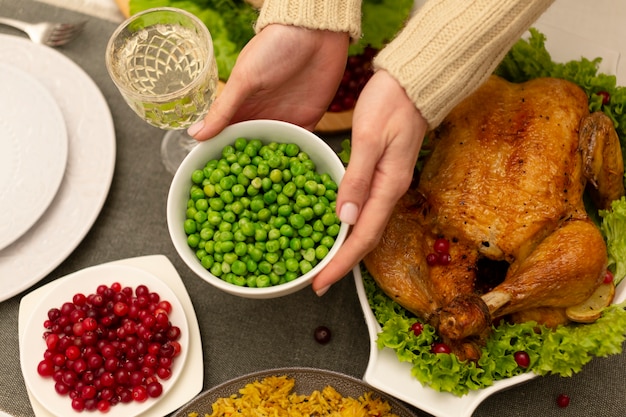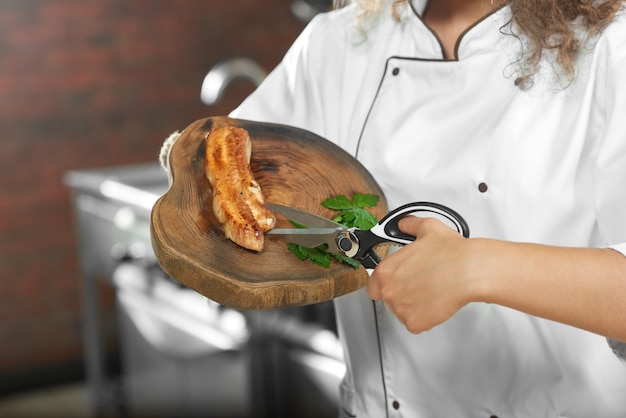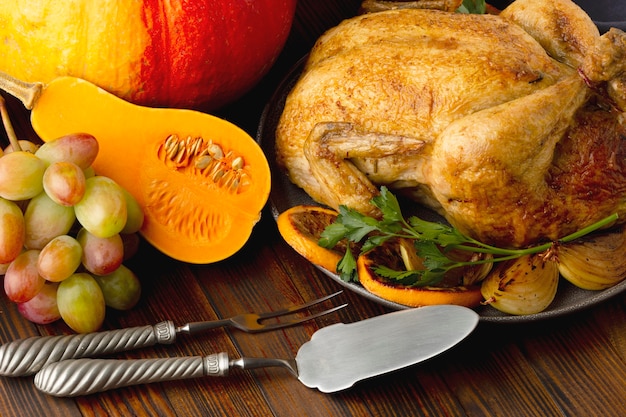(Part 1) Understanding Chicken Cooking Temperatures: The Safety and Flavor Factor

Why Temperature Matters: More Than Just Taste
Cooking chicken to the right temperature isn’t just about creating a flavourful meal; it’s crucial for food safety. undercooked chicken can harbor bacteria, like salmonella, that can make you seriously ill. We’re talking about stomach cramps, nausea, and vomiting – not a fun time, trust me. On the flip side, overcooking chicken can turn it into a dry, chewy nightmare. We need to hit that sweet spot – the perfect temperature where the chicken is cooked through and still juicy.
internal temperature vs. External Appearance: Don’t Be Fooled
Here's the thing: you can’t rely on the colour of the chicken to tell if it’s cooked through. Sometimes, it might look golden brown and delicious on the outside, but the inside could still be raw. That’s why using a meat thermometer is essential. It measures the internal temperature of the chicken, giving you a precise reading of whether it's safe to eat. Forget about guessing, let the thermometer be your trusty guide.
(Part 2) The Golden Rule for Chicken: 165°F (74°C)

The Magic Number for Safe and Delicious Chicken
The USDA (United States Department of Agriculture) recommends cooking chicken to an internal temperature of 165°F (74°C). This temperature ensures that any harmful bacteria are killed. You might hear some people say that 160°F (71°C) is okay, but I always go for the higher temperature just to be extra cautious. Why take the risk?
How to Use a Meat Thermometer: A Simple Guide
Okay, you're probably thinking, "Great, but how do I actually use this thermometer thing?" Don't worry, it's super simple. Just insert the thermometer into the thickest part of the chicken, making sure it doesn't touch any bone. It will give you a reading within a few seconds. If it's not at 165°F (74°C) yet, keep cooking until it hits that magic number. Easy peasy.
(Part 3) Exploring Different Ways to Cook Chicken: A culinary adventure

Roasting: A Classic and Simple Option
Roasting is a classic way to cook chicken, and for good reason. It's easy, hands-off, and results in a succulent, juicy bird. Preheat your oven to 375°F (190°C). Season your chicken with salt, pepper, and your favorite herbs. Place the chicken in a roasting pan and cook for about 45-60 minutes, or until the internal temperature reaches 165°F (74°C). You can even roast vegetables alongside your chicken for a complete meal.
Baking: A Great Alternative to Roasting
baking chicken is very similar to roasting, but it's done in a baking dish instead of a roasting pan. This is a great option if you have a small oven or want to cook chicken in a more confined space. Preheat your oven to 350°F (175°C), and follow the same seasoning and cooking time guidelines as for roasting. You can get creative with your baking dish, using a cast iron skillet, for example, for a lovely crispy skin.
Grilling: Adding a Smoky Flavor
grilling chicken gives it that lovely smoky flavour that we all love. Preheat your grill to medium-high heat. Make sure your grill grates are clean and oil them lightly to prevent sticking. Grill the chicken for about 6-8 minutes per side, or until the internal temperature reaches 165°F (74°C). Keep an eye on it, as grill temperatures can vary.
Pan-Frying: Quick and Easy
pan-frying chicken is a great way to get a meal on the table quickly. Heat a large skillet over medium-high heat. Add a tablespoon or two of oil to the pan. Season your chicken and cook for about 3-4 minutes per side, or until golden brown and cooked through. You can also add some vegetables to the pan with your chicken for a complete meal.
(Part 4) Common Chicken Cuts and Cooking Times: A Practical Guide
whole chicken: A Versatile Option
A whole chicken is a great choice because it can be roasted, baked, or grilled. Cooking time will vary depending on the size of the chicken. Generally, a 3-4 pound chicken will take about 1 hour and 15 minutes to 1 hour and 30 minutes to cook. Always check the internal temperature in the thickest part of the thigh to ensure it's cooked through.
chicken breasts: Lean and Popular
Chicken breasts are a lean and popular choice for their versatility. They can be grilled, pan-fried, or baked. For chicken breasts, aim for a cooking time of 15-20 minutes, depending on the thickness. Remember, the trusty thermometer is your best friend here.
chicken thighs: Forgiving and Flavorful
Chicken thighs are more forgiving than chicken breasts, as they are more flavorful and stay juicy even after longer cooking times. They can be cooked in the same ways as chicken breasts, but they will generally take a bit longer. Aim for a cooking time of 20-25 minutes for boneless, skinless thighs.
Chicken Legs: Roasting and Grilling Goodness
Chicken legs are perfect for roasting or grilling, offering a nice combination of dark and white meat. A good rule of thumb is to cook them for about 45-50 minutes at 375°F (190°C) in the oven. As always, check the internal temperature to ensure it reaches 165°F (74°C).
chicken wings: A Party Favorite
Chicken wings are a popular party food. They are usually baked, fried, or grilled. For baking, preheat the oven to 400°F (200°C) and cook the wings for about 30-40 minutes. For grilling, cook the wings over medium heat for about 20-25 minutes, flipping them halfway through. For frying, heat oil to 350°F (175°C) and fry the wings for about 10-12 minutes. Make sure the wings are cooked through and reach an internal temperature of 165°F (74°C).
(Part 5) Tips for Perfectly Cooked Chicken: From Beginner to Pro
Don’t Overcrowd the Pan: Space is Key
When you’re pan-frying or baking chicken, don’t cram all the pieces together. This can lead to uneven cooking and steam buildup, making the chicken soggy. Leave some space between each piece of chicken to allow for proper air circulation.
Use a Meat Thermometer: Your Trusted Cooking Companion
I know, I’ve mentioned this before, but it’s so important, it bears repeating! Always use a meat thermometer to check the internal temperature of the chicken, especially when roasting or baking. It's the only way to ensure that the chicken is cooked through and safe to eat.
Let the Chicken Rest: A Quick Step for Juicy Meat
After cooking, let the chicken rest for about 10 minutes before slicing or serving. This allows the juices to redistribute throughout the meat, resulting in a more tender and flavorful chicken. Patience is key!
Don’t Wash the Chicken: A Common Misconception
This might seem strange, but washing chicken actually increases the risk of cross-contamination. The water can splash and spread bacteria to other surfaces. Just pat the chicken dry with paper towels before cooking.
(Part 6) Signs of Undercooked Chicken: What to Look For
Pink or Red Center: The Most Obvious Sign
The most obvious sign of undercooked chicken is a pink or red center. This means that the chicken hasn't been cooked to a safe internal temperature and could contain harmful bacteria. It's always better to err on the side of caution and cook the chicken a bit longer if you're unsure.
Juices Run Clear: A Sign of Doneness
When you cut into a cooked chicken breast, the juices should run clear. If the juices are pink or red, the chicken is not cooked through and should be cooked further.
Chicken Feels Soft or Squishy: A Texture Test
Undercooked chicken will feel soft or squishy when you touch it. Cooked chicken should feel firm and springy to the touch.
(Part 7) Don’t Be Afraid to Experiment: Spice Up Your Chicken Dishes
Spices and Flavors: Endless Possibilities
Cooking chicken doesn't have to be boring. Get creative with your spices and flavors. Experiment with different herbs and spices to find your favourites. I love to use a combination of paprika, garlic powder, onion powder, and salt and pepper. You can also try adding citrus zest, ginger, or even a bit of chili powder for a kick.
Different Cooking Methods: Explore and Discover
Once you've mastered the basics of chicken cooking, don't be afraid to try different methods. You can roast chicken with vegetables, pan-fry chicken with a sauce, or grill chicken with a marinade. There are endless possibilities! Just remember to always check the internal temperature of the chicken to ensure it's cooked through.
(Part 8) FAQs: Common Questions About Chicken Cooking
Q: Can I use a meat thermometer to check the temperature of ground chicken?
A: Yes, it's important to check the internal temperature of ground chicken as well. The USDA recommends cooking ground chicken to an internal temperature of 165°F (74°C) to kill any harmful bacteria.
Q: What happens if I overcook chicken?
A: Overcooked chicken will be dry and tough. It's best to cook chicken to the recommended internal temperature of 165°F (74°C) and no more.
Q: Can I reuse the same meat thermometer for chicken and other meats?
A: Yes, you can use the same meat thermometer for different meats. Just make sure you clean it thoroughly with hot, soapy water after each use.
Q: How long can I store cooked chicken in the refrigerator?
A: Cooked chicken can be stored in the refrigerator for up to 3-4 days. It's best to store it in an airtight container or wrap it tightly in plastic wrap to prevent it from drying out.
Q: How can I tell if cooked chicken is bad?
A: Cooked chicken that has gone bad will have an off odour, a slimy texture, or a discolored appearance. If you're unsure, it's best to err on the side of caution and throw it away.
(Part 9) Final Thoughts: Confidence in the Kitchen
Remember, cooking chicken to the right temperature is all about safety and deliciousness. By following these tips and using a meat thermometer, you can confidently cook chicken that is safe and delicious. It's really not as complicated as it seems. Just be patient, practice, and soon you'll be whipping up chicken dishes like a pro. So go on, grab your ingredients and get cooking!
Everyone is watching

Corn on the Cob: The Ultimate Guide to Perfectly Cooked Ears
Healthy MealsAh, corn on the cob. Just the name evokes images of sunny days, barbecues, and that sweet, juicy flavour that ...

Scallops: The Ultimate Guide to Perfect Cooking
Healthy MealsAh, scallops. Those delicate, sweet, and utterly delicious morsels of the sea. They hold a special place in my...

Spaghetti Squash: The Ultimate Guide to Cooking and Serving
Healthy MealsRemember that time you saw spaghetti squash at the supermarket, looking all bumpy and strange, and thought, "W...

Salmon Cooking Times: Perfect Guide for Every Recipe
Healthy MealsLet me tell you, cooking salmon is an art form. It's all about getting that perfect balance: juicy and tender,...

Ham Cooking Time: How Long to Bake, Smoke, or Boil a Delicious Ham
Healthy MealsAh, ham. It's a classic, isn't it? A real crowd-pleaser, especially around holidays. And when done right, it'...
